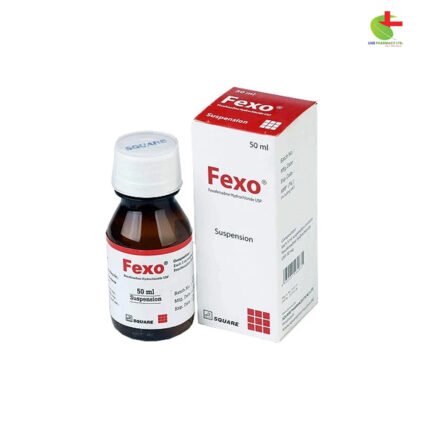Motigut Oral Suspension
40.00৳ Pcs
- Motigut provides relief from dyspeptic symptoms like abdominal pain, nausea, and heartburn.
- Powered by Domperidone, it enhances gastrointestinal motility without causing neurological side effects.
- Effective for conditions such as delayed gastric emptying, gastroesophageal reflux, and non-ulcer dyspepsia.
- Flexible dosing options available for adults and children, ensuring tailored treatment for various gastrointestinal issues.
- Suitable for acute nausea and vomiting of functional, organic, infectious, or dietetic origins, as well as those induced by radiotherapy or drug therapy.
 Brand
Brand
|
Square Pharmaceuticals PLC |
|---|---|
 Generics
Generics
|
Domperidone Maleate |
 Type
Type
|
Suspension |
 Size
Size
|
60 ML |
Indications
Motigut is indicated for the relief of dyspeptic symptom complexes, commonly associated with delayed gastric emptying, gastroesophageal reflux, and esophagitis. These symptoms may include:
- Epigastric fullness, abdominal distension, and upper abdominal pain
- Eructation, flatulence, and early satiety
- Nausea and vomiting
- Heartburn with or without regurgitation of gastric contents
- Non-ulcer dyspepsia
Additionally, Motigut is effective for acute nausea and vomiting of various origins, including functional, organic, infectious, dietetic, or induced by radiotherapy, drug therapy, or migraine. It is also used in Parkinson’s disease-related nausea and vomiting and for speeding barium transit in radiological studies.
Pharmacology
Motigut contains Domperidone, a dopamine antagonist that primarily blocks dopamine receptors in the Chemoreceptor Trigger Zone (CTZ) and stomach. Its gastroprokinetic action involves blocking dopamine receptors influencing gastrointestinal motility. With minimal penetration across the blood-brain barrier, Domperidone avoids psychotropic and neurologic side effects. It enhances upper gastrointestinal tract motility and tone, facilitates gastric emptying, regulates pyloric contraction, increases esophageal peristalsis, and prevents gastric content regurgitation.
Dosage & Administration
- Motigut should be taken 15-30 minutes before meals and, if necessary, before retiring.
- The recommended oral dose for adults is 10-20 mg (1-2 tablets or 10-20 ml suspension) every 6-8 hours daily. The maximum daily dose is 80 mg.
- Children’s dosage varies based on age and condition, typically ranging from 0.2-0.4 mg/kg every 6-8 hours daily.
Interaction
Motigut may interact with anticholinergic drugs and antacids, lowering its oral bioavailability. Concomitant use with CYP3A4 inhibitors like azole antifungals and macrolide antibiotics may increase Domperidone plasma levels.
Contraindications
Avoid Motigut in patients with known hypersensitivity to Domperidone or neonates. It should not be used in cases of gastrointestinal hemorrhage, obstruction, or perforation, or in patients with prolactin-releasing pituitary tumors.
Side Effects
Rare side effects may include transient intestinal cramps, extrapyramidal phenomena (especially in young children), and allergic reactions such as rash and urticaria. Hyperprolactinemia-induced phenomena like galactorrhea and gynecomastia may occur rarely.
Pregnancy & Lactation
While animal studies suggest no teratogenic effects, caution is advised during the first trimester of pregnancy. Domperidone concentrations in breast milk are lower than plasma concentrations, but nursing mothers should weigh benefits against potential risks.
Precautions & Warnings
Use Motigut cautiously in children due to the risk of extrapyramidal reactions. Patients with hepatic or renal impairment should be monitored closely.
Use in Special Populations
Exercise caution when using Motigut in infants and patients with liver or kidney disorders. Dosing adjustments may be necessary in severe renal insufficiency.
Overdose Effects
Symptoms of overdose may include drowsiness, disorientation, and extrapyramidal reactions. Treatment involves supportive measures like activated charcoal and close patient observation.
Therapeutic Class
Motility Stimulants, Dopamine Antagonists, Prokinetic Drugs
Storage Conditions
Store Motigut below 30°C, protected from light and moisture, and out of children’s reach.













Reviews
There are no reviews yet.